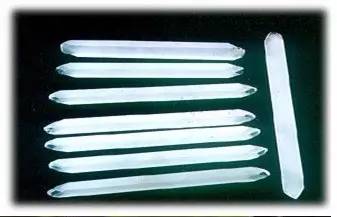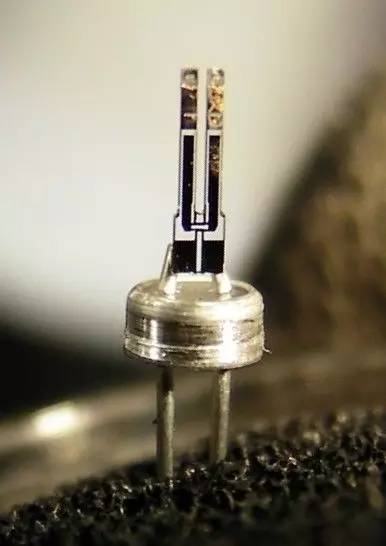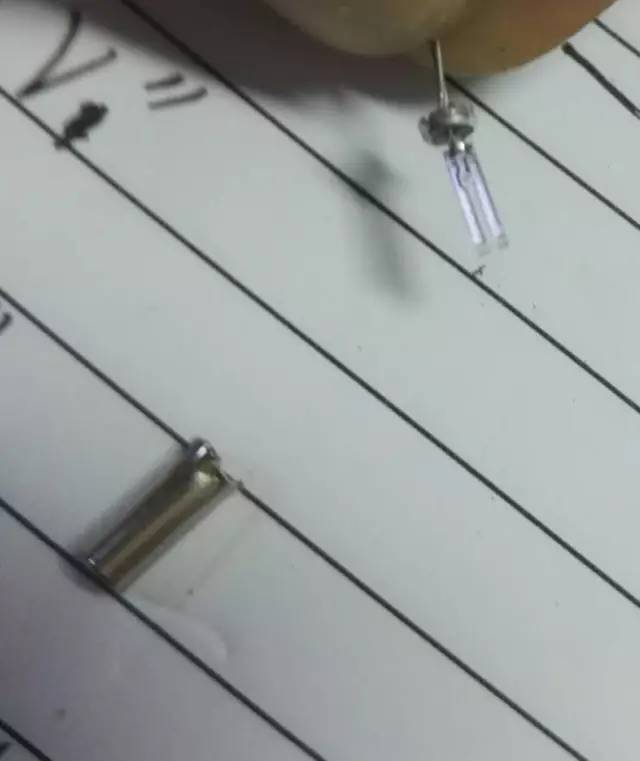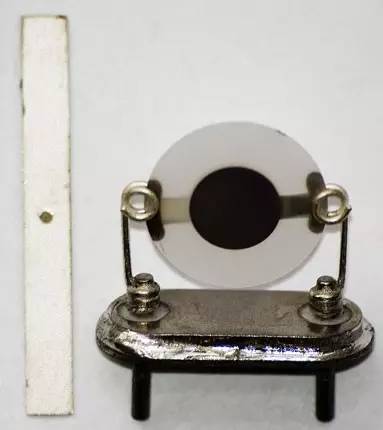Two young colleagues designed a circuit board using a 32.768 kHz crystal that was previously selected for the FC135 package. However, when they wanted to switch to a 25MHz crystal, they found out that the FC135 package wasn't available anymore. This led to confusion and frustration as they had no communication with suppliers or purchasers.
When it came time to order components, they were shocked to find that the 25MHz crystal in the FC135 package wasn’t available at all. The engineers who had tested the circuit earlier became upset, realizing that they hadn’t considered the availability of the component.

Why do some crystals only have a frequency of 32.768kHz?
Let’s take a look at a long picture to compare:

We can see that the 32.768kHz crystal package has almost no overlap with other frequencies. So, have you noticed any patterns between different crystal packages?
Why is this happening? What makes the 32.768kHz crystal so special?
1. Basic Principle of Crystal Oscillators
A crystal oscillator is an energy converter that uses a quartz crystal resonator to determine its operating frequency. Compared to LC circuits, it offers higher stability, quality factor, and frequency accuracy. With high precision and stabilization measures, it can achieve a stability of up to 10^-4 to 10^-11.
The main function is oscillation, which allows it to respond to specific frequencies for filtering and frequency selection. A quartz resonator behaves similarly to an RLC circuit.
Quartz crystal, commonly known as a crystal, is a hexagonal pyramid made of silicon dioxide (SiO2), which is relatively hard. It has three perpendicular axes: the Z-axis (optical axis), the X-axis (electric axis), and the Y-axis (mechanical axis).

When pressure is applied along the electric or mechanical axis, charges are generated on the crystal, creating a voltage proportional to the applied force. This is called the piezoelectric effect. When an electric field is applied, the crystal deforms, leading to the inverse piezoelectric effect.
When an alternating voltage is applied, the crystal vibrates mechanically, generating alternating charges. The vibration frequency is inversely proportional to the thickness. Higher frequencies require thinner wafers, which are more fragile and harder to process. Overtone crystals are often used for higher frequencies, while fundamental frequency crystals are used below 20 MHz.
Crystal oscillators use the piezoelectric effect of quartz to generate stable frequencies. They are packaged in metal, glass, ceramic, or plastic cases. The main parameters include nominal frequency, load capacitance, frequency accuracy, and stability.
For example, common frequencies are 48kHz, 500kHz, 1MHz to 40.50MHz, etc. Special applications can go beyond 1000MHz. Load capacitance determines the oscillation frequency, and different crystals may have different values.
When a crystal doesn't oscillate, it acts like a capacitor C0, typically ranging from several pF to tens of pF. Its mechanical inertia is equivalent to inductance L, usually between 10^-3 and 10^2 H. The elasticity of the wafer is equivalent to capacitance C1, and its value depends on cutting method, size, shape, and electrode configuration.
Nominal frequency (FL), load capacitance (CL), frequency accuracy, and stability are key parameters. The performance of a crystal oscillator depends on factors like crystal quality, cutting orientation, structure, and circuit design.
Fs is the inherent frequency of the crystal, influenced by how it's cut, its thickness, and electrode configuration.
F=2560/t(BT) F=1670/t(AT)
 2. Tuning Fork Structure
2. Tuning Fork Structure
In short, a crystal oscillator is a general term for a crystal resonator and a crystal oscillator. The resonator includes ceramic and quartz types. Quartz resonators can be further divided into tuning fork crystals and patch crystals. The tuning fork shape is common in plug-in crystals, with frequencies in the kilohertz range. The most common size is 3x8 or 2x6, and 32.768kHz is widely used. In 2011, global production of tuning fork crystals exceeded 10 billion units, valued at around $1.5 billion. China's output exceeded 4 billion, accounting for 40% of the world. Even high-end electronics rely on these tiny components, like the iPhone.
 Apple's cooperation, is the number zero devices manufacturers competing goals. Phone zero devices, crystal and SAW filter, 32.768K crystal form is an integral part of .iPhone 5 in 5 models quartz crystal, among them Two tuning fork crystals . Usually we think that 32.768K crystal can only be applied to some low-end electronic products . In fact, this is a mistake . Most electronic products involved in data processing require crystal oscillators to provide clock frequency. Otherwise, it will not start or work effectively . It can be seen that the crystal oscillator, especially the tuning fork crystal oscillator, is an important component in electronic products.
Apple's cooperation, is the number zero devices manufacturers competing goals. Phone zero devices, crystal and SAW filter, 32.768K crystal form is an integral part of .iPhone 5 in 5 models quartz crystal, among them Two tuning fork crystals . Usually we think that 32.768K crystal can only be applied to some low-end electronic products . In fact, this is a mistake . Most electronic products involved in data processing require crystal oscillators to provide clock frequency. Otherwise, it will not start or work effectively . It can be seen that the crystal oscillator, especially the tuning fork crystal oscillator, is an important component in electronic products.
Tuning fork crystals are used in clocks, watches, mobile phones, tablets, microcomputers, calculators, home appliances, and industrial automation. China's tuning fork crystal market is growing rapidly, driving demand. In 2011, China produced 1.9 billion watch movements, requiring 1.9 billion tuning fork crystals. Mobile phone production reached 1.13 billion units, needing at least 1.7 billion tuning fork crystals. Consumer electronics and microcomputers also contribute significantly to the demand.

3. Unreasonable Frequency Range in No-Slice Mode
Wafer cutting:
The most important component of a crystal oscillator is the crystal vibrator, cut from a quartz crystal. Common shapes include round, square, and SMT (smaller square).

Wafers can be cut into AT-CUT, BT-CUT, CT-CUT, etc., based on the optical axis (Z-axis). Each cut corresponds to a specific angle, and the choice depends on temperature characteristics and frequency requirements.
| Slice Method | Frequency Range | Mode | Angle |
| AC | 31° | ||
| AK | Thickness | ||
| AT | 0.5–300 MHz | Thickness shear (c-mode, slow quasi-shear) | 35°15', 0° (<25 MHz) 35°18', 0° (>10 MHz) |
| BC | −60° | ||
| BT | 0.5–200 MHz | Thickness shear (b-mode, fast quasi-shear) | −49°8', 0° |
| CT | 300–900 kHz | Face shear | 38°, 0° |
| DT | 75–800 kHz | Face shear | −52°, 0° |
| E, 5°X | 50–250 kHz | Longitudal | |
| ET | 66°30' | ||
| FC | Thickness | ||
| FT | −57° | ||
| GT | 0.1–3 MHz | Width-extensional | 51°7' |
| H | 8–130 kHz | Length-width flexure | |
| IT | Thickness | ||
| J | 1–12 kHz | Length-thickness flexure | |
| LC | Thickness | 11.17°/9.39° | |
| MT | 40–200 kHz | Longitudal | |
| NLSC | |||
| NT | 8–130 kHz | Length-width flexure (bending) | |
| RT | |||
| SBTC | |||
| SC | 0.5–200 MHz | Thickness | 35°15', 21°54' |
| SL | Face-shear | −57°, 0° | |
| TS | |||
| X | |||
| XY, tuning fork | 3–85 kHz | Length-width flexure | |
| X 30° | |||
| Y |
4. Comparison of Tuning Fork Structure and Other Crystal Oscillator Sizes
This is my actual disassembly of the 32.768kHz crystal, showing the tuning fork structure inside.



Therefore, the frequency of crystals used in high-speed chips like MCUs and CPUs is above 1MHz, which is why their packaging is generally different from the 32.768kHz package.
The tuning fork structure is widely used, and if the internal structure is a tuning fork, the outer casing is often slim and long. High-frequency crystals cannot use the tuning fork structure.
I'm not a crystal manufacturer, but through logical reasoning and analysis, I've explored the reasons behind the packaging differences. There may be errors, and I welcome corrections from experts and manufacturers.
At the same time, I remind engineers to double-check before designing, to avoid similar issues in the future.
Original Bang Pi 10000 Puff,Bang Pi 10000 Puff Disposable Vape,Bang Pi 10000 Puff Disposable
Longhua Manxueling Trading Company , https://www.mxlvape.com
